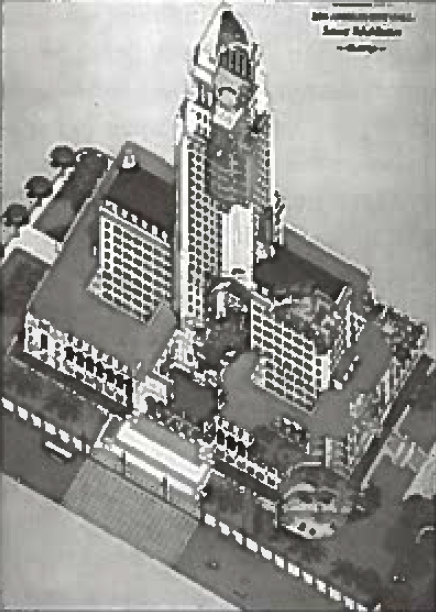Contractors are preparing for repair and seismic upgrade work on the Northridge Earthquake damaged 1928 Los Angeles City Hall. But a debate is smoldering about whether additional investment should be made to restore the classic structurer while the other work is ongoing. Making the case for restoration is Pam O’Connor, Santa Monica Mayor Pro Tem and preservationist at the Santa Monica firm of Mellon & Associates.

Pam O'Connor
“If the current City Hall project moves ahead without selected additional repair/restoration components, City Hall will be a political target in 2001.”
I may not be a native Californian, but the first day I arrived in Southern California, I knew which building was Los Angeles' City Hall. Its silhouette punctuates the Downtown skyline, and its image has become an icon.
The seismic retrofitting of City Hall is beginning. But still in question is what level of investment should be made in this Los Angeles icon.
Now, it's a tough world out there for public officials. One of a city's assets is its buildings. But how much investment of scarce dollars should be earmarked for maintenance and rehabilitation of building assets? Too often in the past decisions were made to defer maintenance. We've all seen the results—deteriorating buildings and parks and the impact on neighborhoods.
Prudent public officials apply strict management and fiscal controls on projects to protect the expenditure of public funds. But what is the appropriate level of investment for a project?
Public debate continues around such issues on the Los Angeles City Hall Project. What level of resources should be invested in preserving City Hall? Some officials take the view that any repair and restoration beyond the basic seismic engineering is either a political target or an unnecessary higher sticker-price repair.
The spirit of these outlooks has merit, but their literal application is shortsighted. If the current City Hall project moves ahead without selected additional repair/restoration components, City Hall will be a political target in 2001. People will walk into the building and wonder why the elevators are shabby, why the major public spaces and publicly accessed offices are still deteriorated. The questions will be, just where did all the money go?
And what about that car repair, sticker-price analogy? You may not have all the money needed to repair all the car's systems, but when the repair costs include labor to open the engine, you recognize the economy of making needed repairs at that time. Why? Because you don't want to spend more money to do the same thing—reopen the engine—again.
So, what's the bottom line? Do the right thing for the building and the people of Los Angeles and Southern California. Make the investment in Los Angeles's historic icon—City Hall—when construction work is taking place. Keep tight reigns on the fiscal management of the project and don't roll out a Cadillac but ensure that City Hall's public spaces are respectful of the people and future generations of the City of Los Angeles and Southern California.
- Log in to post comments




